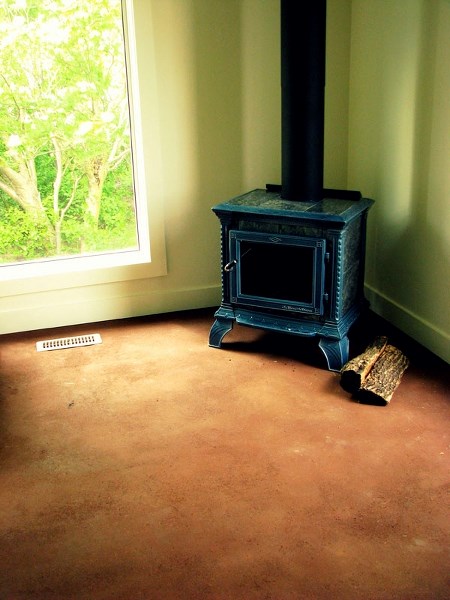Heather Noakes and Ashley Lubyk haven’t exactly cleaned up on dirt but they certainly have learned how to make a living using it as a building material.
Noakes and Lubyk are environmentalists and it was that love of all things natural that led them to clay. In a true sense, they wanted to get back to the most basic element of all, dirt.
“Ashley has an environmental science degree and along the way we started training ourselves in natural building materials and practices,” said Noakes.
The Calgarians, who own Dirt Craft Natural Building, offer a series of workshops on how to build with clay, and they promise that anyone who tries it will find themselves getting right into the muck with them.
“When you make a cob oven, you mix the clay with your feet, for two reasons. The mechanical action of grinding the clay and the sand with your feet makes the material more homogenous than it would be if you used a cement mixer. Also, working with your feet is a way to get intimate with the clay and to experience what it feels like when it’s right,” Noakes said.
The word cob has a Welsh derivation and simply means a lump of mud, Noakes explained.
“So if you have a cob oven, you have an oven made out of mud. In Alberta we are blessed naturally with a lot of clay and when building a cob oven, clay is a really accessible building material that’s available everywhere.”
Still, despite the ready availability of the material, not all dirt is created equally, Noakes is quick to point out. The dirt that you once played with to make mud pies, may not be suitable for building.
“The clay you used to make mud pies likely crumbled because it had a lot of top soil in it or silt. Silt mimics clay but it is not a good binder,” Noakes said, adding that the clay is tested prior to construction to make sure it is suitable.
“Most of the clay we use is sourced from construction sites. Otherwise the clay usually goes to the landfill and most contractors are only too happy to let you have it,” she said.
Noakes has a beehive-shaped cob oven in her own backyard. She says it is more efficient for cooking than the electric model inside the house.
“We build a fire, then we pull the fire out. We cook using the thermal temperature inside the oven and we cook a succession of dishes. When it’s hot, we might start with pizza. Then maybe we’ll put the door in and we’ll cook flatbread, and perhaps char the outside of some eggplant. As the oven gets cooler we might cook a stew or a roast, and a pie,” she said.
Noakes likes to bake sourdough bread in her oven.
“The bread is cooked directly on the hearth with no pan and it gets a beautiful crust. Plus the dome shape of the oven creates convection heating and I can bake six loaves at a time,” she said.
Most cob ovens are raised off the ground onto a platform of rocks, which are set in sand. A flat fire-brick hearth provides the cooking floor for the oven.
Next, a dome-shaped sand castle is built on top of the hearth. The sand provides the shape of the finished oven. The domed castle is usually covered with a layer of wet newspaper to keep the sand separate from the covering, insulating cob layers.
The next day, after the outer layers of the oven have set and dried somewhat, a door is cut into the mud and the sand is removed. The oven must dry and cure for about two weeks before it can be used.
Noakes and Lubyk use clay in many ways. They experimented with clay by plastering it over the drywall on the inside walls of their 60-year-old house. They partially rebuilt their garage, using a layer of straw to insulate the walls. They have a dirt floor in their office.
“An earthen floor is really good for passive solar design. It is hand layered and trowelled and cured with hemp or linseed oil, so then you can wash it. If you want more shine, you can polish it with beeswax,” she said.
Noakes explained that when she walks on the dirt floor in her bare feet, it feels soft and comfortable, yet it is also relatively durable. The clay provides thermal-mass heating by absorbing heat from the sun and slowly releasing it.
“It’s smooth and a little textured. It’s nice when the sun is on it because it feels warm, yet in the summer, it feels cool. That is the nice thing about thermal-mass heating. It captures the sunlight and stabilizes the indoor temperature,” she said.
The oil provides the durability and helps protect the floor from gouges.
“The oil is put on in layers and as it oxidizes, it hardens the floor. Of course oil also repels water. Maintenance is simple. Once in a while we re-oil our floor and we saved some clay, so we have the same colour to use again if need be. We treat it as we would treat a hardwood floor,” she said
The clay finish on the walls acts in much the same way, and helps retain the warmth from the sun. Noakes and Lubyk also used the clay-plaster finish on their bathroom walls where it helps to mitigate the humidity in the room.
“There are no chemicals so the indoor air quality is better and people who have multiple chemical sensitivities to paints, to laundry detergent, to soap and to other chemicals that their immune systems just cannot handle, like the clay walls for that reason. It smells like the earth and people have told me they wish they could bottle that smell and put it into their own homes.”
For more information about working with clay or dirt, visit www.dirtcraft.ca




